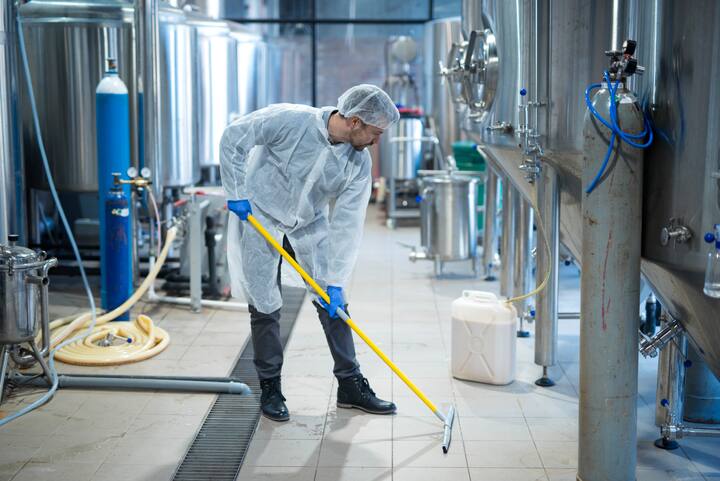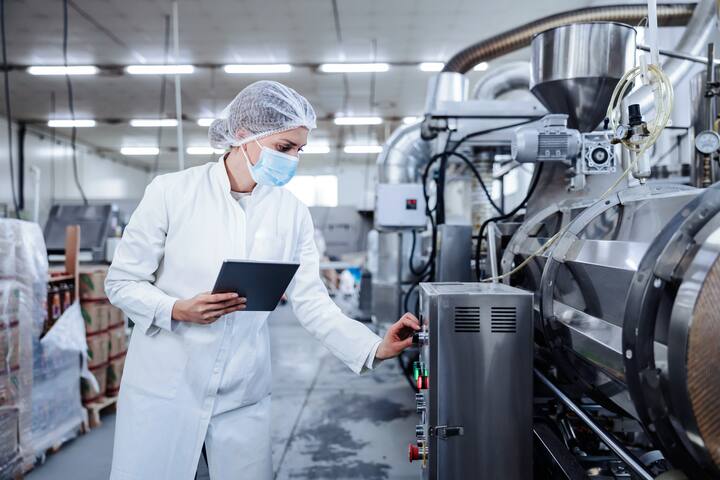
Controlling environmental pathogens is more than just testing for Listeria
Controlling environmental pathogens is more than just testing for Listeria
Effective control of environmental pathogens is crucial for food safety and product quality. The focus is often on Listeria monocytogenes, but other bacteria and pathogens also pose a risk and deserve attention in monitoring programmes.
Various bacteria in a complex environment
Listeria monocytogenes is a major concern due to the serious consequences of listeriosis, particularly for vulnerable population groups. However, other pathogens such as Salmonella spp., Escherichia coli (E. coli) O157:H7, Campylobacter spp. and Staphylococcus aureus can also cause serious food infections. Each of these microorganisms has unique properties, survival strategies and routes of spread within production environments. Not only can Listeria survive for long periods on surfaces and equipment, but Salmonella, for example, can attach itself to dry environments such as bakeries or spice production, while E. coli is mainly spread via water and raw products. Analysing Listeria alone therefore provides an overly limited picture of microbiological safety. Indicator organisms such as Enterobacteriaceae or coliforms, for example, can indicate general hygiene problems and the possible presence of other pathogens such as Cronobacter spp. In addition, Bacillus cereus poses a specific risk due to its heat-resistant spores and toxin production. This microorganism survives in dry, nutrient-poor environments and poses a threat in sectors that process starchy products such as rice, pasta, cereals, potato products, dairy products and spices.
Biofilm formation: a persistent problem
During biofilm formation, bacteria attach themselves to surfaces and form a protective layer. Bacteria in a biofilm are protected by a self-produced slime layer (extracellular matrix), which makes them much more resistant to cleaning and disinfecting agents. Biofilms can be a breeding ground for pathogens such as Listeria monocytogenes, Salmonella spp., Escherichia coli and Staphylococcus aureus. Once this biofilm detaches or is disturbed, pathogens can spread and contaminate food.
Biofilms can develop on surfaces that are difficult to clean, such as drains, conveyor belts, cutting machines and pipes. If the biofilm is not effectively removed, this can lead to cross-contamination of products, increasing the risk of recalls and outbreaks. Preventing biofilm formation, thorough validation and control of cleaning and disinfection methods are therefore the basis for managing environmental pathogens.

Regulations and expectations
Food safety standards such as the FSMA (Food Safety Modernisation Act), BRCGS, FSSC 22000 and IFS require a holistic approach to environmental monitoring. Customers and certifying bodies increasingly expect companies to demonstrate that they control a wide range of microbiological risks.
In Belgium, the FAVV has published the generic module for the control of environmental pathogens, which prescribes a structured monitoring plan with analyses before, during and after production. This plan is mandatory for all food companies in Belgium. In addition to Listeria, this module also requires Salmonella to be taken into account and, depending on the sector and process, other bacteria such as Campylobacter and B.cereus.
Prevention is better than cure
By monitoring various pathogens, your company can detect trends and potential hazards at an earlier stage. This enables you to take preventive measures, such as optimising cleaning procedures, improving air systems and adjusting production flows to minimise cross-contamination.
Although Listeria is one of the most feared pathogens in the food industry, environmental monitoring should not be limited to this. Other bacteria and pathogens can pose an equally significant – if not greater – risk depending on the type of food production. Integrated and comprehensive microbiological monitoring contributes to a safer production process and reduces the risk of food-related outbreaks and recalls.